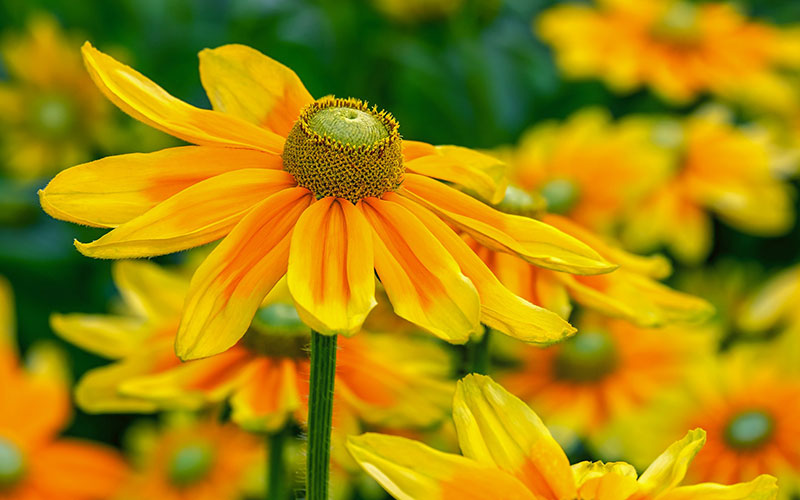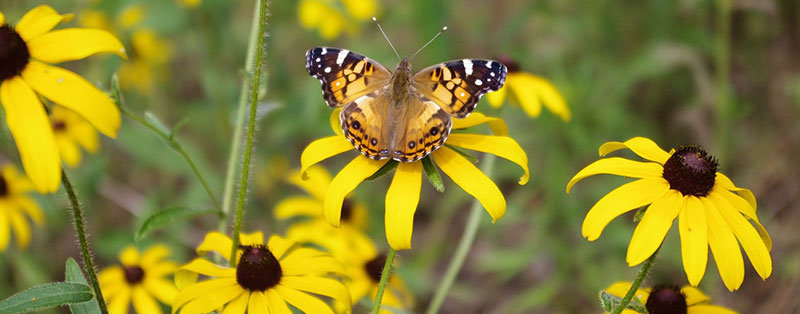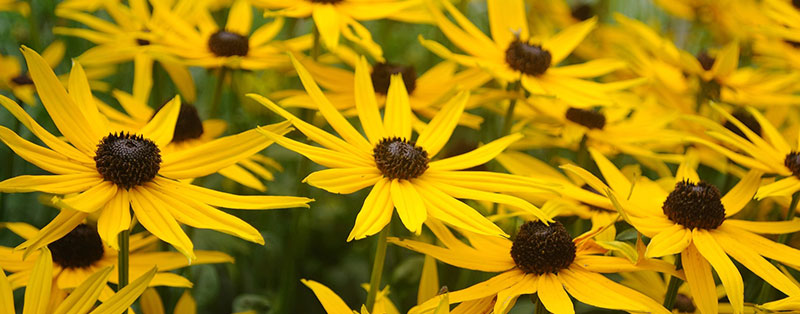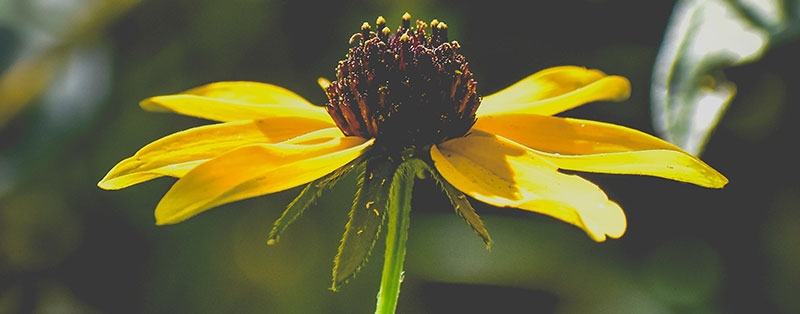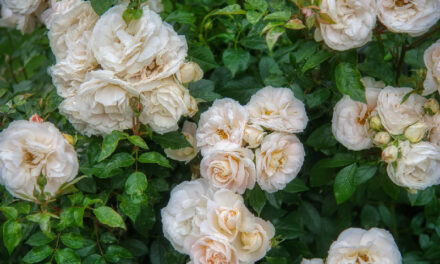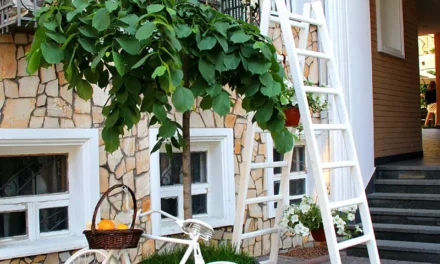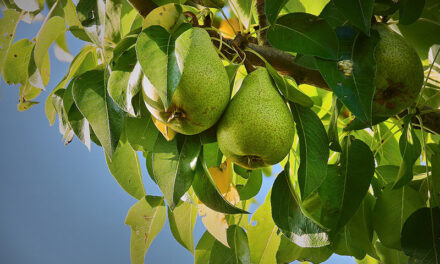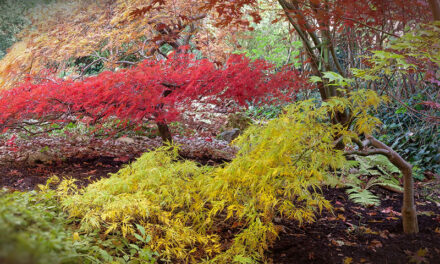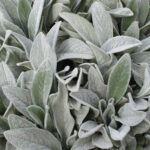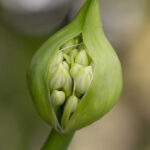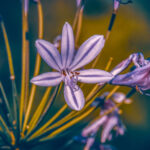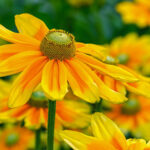Rudbeckia or Coneflower is an herbaceous perennial plant that can reach up to a meter in height. It produces beautiful flowers resembling daisies. The plant also possesses anti-allergic and anti-inflammatory properties, offering relief from colds, flu, runny noses, and coughs.
Coneflower Plant
Rudbeckia, known by its Latin name Echinacea (Echinacea purpurea L.), is characterized by its central head filled with thorns. The name is derived from the Greek ‘Echinos,’ meaning ‘hedgehog.’ ‘Purpurea’ denotes the flower petals’ inherent color in Latin. The Sun Hat was first recorded in Europe at the beginning of the twentieth century, although it originally hails from North America. Indigenous tribes of this continent have used the plant for centuries to heal arrow wounds, snake bites, and injuries.
It’s well-regarded as a disinfectant for abscesses, boils, superficial wounds, and burns. For medicinal purposes, every part of the plant can be utilised, including flowers, stems, leaves, or the entire plant with attached roots.
The name ‘coneflower’ is used for two plant species, Echinacea and Rudbeckia. Both plants closely resemble each other and belong to the same family. Originally, Echinacea has purple and pink flowers, while Rudbeckia exhibits more yellow, orange, and red tones. The most noticeable difference lies in the flower’s size; Rudbeckia’s flowers are generally smaller with fewer petals compared to Echinacea.
Sowing Coneflower
Seeds Rudbeckia is a short-lived plant that propagates through seeds, providing continuous delight as they easily generate copious amounts of seeds. Seed formation occurs from winter to spring. Note that newer varieties rarely produce seeds. Simply place seeds on the surface of moist soil, covering them with a thin layer of sifted sand or sawdust.
You can also sow in pots or other planters. Seeds germinate within 2 to 3 weeks at a consistent temperature of 15-16 º Celsius. Transplant them when they reach a height of 5 to 10 cm. Rudbeckia fulgida propagates easily through seeds and can be sown in the northern hemisphere during mild winters from December to April.
Planting Coneflowers
Rudbeckia thrives in sunlight but can tolerate partial shade. It flourishes in moderate climates and withstands mild frost. It requires ample moisture but cannot endure waterlogging, so it needs to be planted in moist, well-draining soil.
Adaptable to various soil types, Coneflowers excel in soils with a pH between 6.0 and 7.0. Once established, they can withstand dry periods. The plant may wither with the onset of the first frost, but it blooms again the following season. During winter, protecting the roots with mulch is advisable against the cold.
Pruning Coneflowers
It’s highly recommended to prune the plant in late autumn, allowing it to germinate in spring. Remove the dried flowers to maintain its beauty and extend blooming. However, avoid excessive pruning as Rudbeckia dislikes disturbance. Prune moderately by cutting a few stems from each stem group, preferably the oldest or largest, allowing younger stems to grow. Fertilise the plants once a year, preferably in spring.
Rudbeckia flower
These strikingly large and beautiful blooms often act as a magnet for butterflies. Resembling daisies, they showcase vibrant shades of pink or purple. Their petals boast a captivating spectrum from yellow, orange, to brown, while the central cone flaunts hues from green to rusty brown, purple, and black. These flowers come in single or double forms, making them a splendid addition to flowerbeds and containers. Moreover, they serve as exquisite cut flowers, whether arranged solo or paired with other Rudbeckia varieties, seasonal blooms, roses, grasses, small conifers, or perennial plants.
Rudbeckia Varieties
Rudbeckia encompasses approximately 20 species and numerous delightful variations among annuals, biennials, and perennials. Horticultural breeders continually strive to create hybrids boasting exciting new colours and exotic flower forms, a pursuit enthusiastically embraced by gardening enthusiasts.
Within the world of Rudbeckia, a diverse range of species falls into several categories:
- Enhanced iterations of beloved traditional varieties.
- Strains exhibiting uncommon and distinctive flower hues.
- Varieties showcasing unique and exotic flower shapes.
Here are a few recommended cultivars:
- Robert Bloom (Echinacea purpurea), featuring prominent dark orange centres surrounded by vivid crimson petals.
- Tennessee Coneflower (Echinacea tennesseensis), displaying greenish-pink centres with dark mauve petals.
- Finale White (Echinacea purpurea), boasting cream-white flower heads with greenish-brown centres.
Highly favoured Rudbeckia species include the Fulgida, Fulgida Goldsturm, Rudbeckia Hirta, the Maxima, Nitida, and Rudbeckia Triloba. Below, we’ll delve further into these exceptional varieties.
Rudbeckia Fulgida
Rudbeckia Fulgida, also known as Orange Coneflower, originates from the southwest of North America. It is an annual plant often used seasonally in gardens, particularly for bordering or creating colourful beds due to its abundant blooms. Frequently cultivated in pots around 13 centimetres in diameter, Rudbeckia Fulgida generally propagates through runners for vegetative reproduction. Its stems are hairy, and its leaves alternate between lanceolate and heart-shaped. Flowering begins in April, continuing through the summer until mid-autumn.
Rudbeckia Fulgida Goldsturm
From mid-July to late September, the golden-yellow flowers of this Rudbeckia species bring continuous delight. Even as they fade, the flowers retain their large black centres. Rudbeckia Fulgida Goldsturm is cherished not only for its generous flowering but also for its highly adaptable nature.
To encourage blooming, a few shovels of compost at the base of the plants suffice, especially in poor soils. Rudbeckia Fulgida Goldsturm typically reaches a height between 30 to 80 cm. It boasts a vibrant yellow hue with dark eyes, showcasing blooms sized between 7 and 8 cm, reaching a garden height of 70 cm.
Rudbeckia Hirta
Rudbeckia Hirta produces seeds that attract various bird species. This biennial plant entices birds, butterflies, bees, and other insects, which, in turn, can serve as a food source for birds. Rudbeckia Hirta is commonly used to plant eroded lands.
It is incredibly resilient, enduring temperatures as low as -34.4°C. The bright yellow ray flowers measure 5 to 8 cm wide, surrounding a dark centre of densely packed brown discs. A distinctive feature of these blooms is their size, beauty, and lush appearance.
Hairy Rudbeckia
Rudbeckia Hirta, also known as Hairy Rudbeckia, is an exceedingly attractive species perfect for adorning spaces. Not only does Hairy Rudbeckia possess great beauty, but it also carries medicinal properties. Leaves, flowers, and roots can be used to brew a tea that promotes a sense of well-being.
The plant is renowned for its antibacterial and antifungal properties. It thrives in a mild climate yet adapts well to slightly colder climates, making it suitable for high-altitude and mountainous locations with gentle temperatures.
Rudbeckia Maxima
Rudbeckia Maxima, renowned for its towering, upright blooms, stands as a tall, graceful perennial, reaching heights of up to 2.45 meters. Originating from the central and southern United States, encompassing regions such as Oklahoma, Louisiana, Arkansas, and Texas, this plant is affectionately known by various names:
- Giant Coneflower
- Large Coneflower
- Tall Black-eyed Susan
- Cabbage Leaf Coneflower
Rudbeckia Nitida
This striking perennial flaunts elegant stems that ascend to an impressive 2 meters in height. Its bright yellow daisies, crowned with raised central cones, enchant the landscape throughout summer and autumn. Adorned with deeply lobed, dark green leaves, forming a stately base, Rudbeckia Nitida prolifically spreads from its notable seed production. A perfect companion to grasses, Joe Pye Weed, and Verbena bonariensis, it thrives under the sun and requires moderate irrigation. Embracing dormancy in winter, this vibrant plant emerges anew with the arrival of spring.
Rudbeckia Triloba
Commonly referred to as Brown-eyed Susan, Rudbeckia Triloba embodies a robust, bushy, and somewhat untamed perennial. Its summer-to-fall bloom showcases flowers boasting 6-12 yellow rays with brown-purple central discs. Thin and rough-textured leaves, some displaying three lobes, grace this hardy plant. Unlike Rudbeckia Hirta, Rudbeckia Triloba boasts an abundant display of smaller flowers with fewer rays per flower head.
Buying Coneflower Plants
As the perennial’s allure fades with time, annual replanting becomes necessary to uphold the Rudbeckia’s perpetual charm. To ensure a consistently stunning display, consider two essential tips for successful cultivation: prioritise well-draining soil and select robust varieties. The resplendent and opulent bloom of the coneflower makes it an absolute must-have in any garden!

